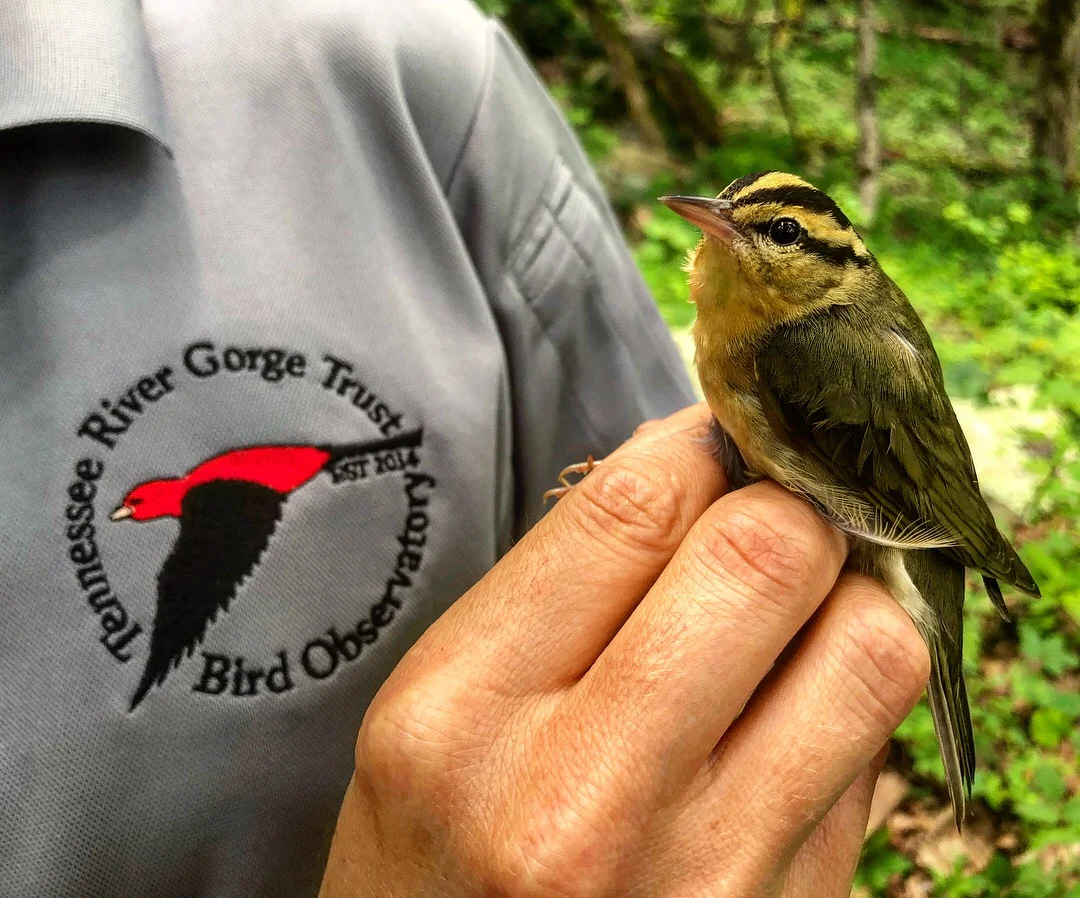Background – There are many complexities involved in the conservation of migratory bird species. The sheer fact that they spend half of the year in two separate geographic regions, which can often be in multiple countries, can complicate conservation efforts and the acquisition of full life-cycle data. For example, a local population of a specific bird species in the Chattanooga area may be declining, but this could be solely due to factors on its wintering ground in Central America rather than anything occurring in Chattanooga (or vice-versa). In this case, sufficient conservation efforts would require knowledge regarding where the bird spends their time away from the breeding grounds and collaborative international action. New technological innovations like light-level geolocators are one of the means in which researchers can now obtain this imperative "full life-cycle data" and then properly inform conservation action. The Tennessee River Gorge Trust and its partners are taking advantage of this technology to answer questions regarding the simultaneous decline and increase of Worm-eating Warblers and Louisiana Waterthrush populations. This project is a collaborative study by the Tennessee River Gorge Trust, University of Toledo, University of Tennessee Chattanooga, University of Tennessee, and Harding University. The project was funded by the Lyndhurst Foundation and the Tennessee Wildlife Resources Agency.
From left to right: Worm-eating Warbler, Eliot Berz and Holland Youngman attaching a geolocator on a Louisiana Waterthrush, and a Louisiana Waterthrush wearing a geolocator.
Project Overview (content edited from writings by Dr. Henry Streby) – Louisiana Waterthrush and Worm-eating Warblers are two migratory bird species that present a unique research opportunity. These two species overlap extensively in their breeding distributions (eastern United States) and non-breeding distributions (Central America and the Caribbean) in addition to sharing similar breeding behaviors and habitat requirements. Despite their robust similarities, there are many locations across the United States where one has experienced local population increases over recent decades while the other has experienced substantial declines over the same period. For example, in the Tennessee River Gorge’s region, the Worm-eating Warbler has decreased in abundance by greater than 1.5% annually while Louisiana Waterthrush have increased by greater than 1.5% annually over the past 50 years. Conversely, in southeastern Pennsylvania and southern Ohio, the opposite trends have occurred for each species. A 1.5% annual decrease may seem like a small number at first glance, but consider the effect of this percent decline over the course of 50 years; it becomes a much more sobering number. Since one of these species is flourishing while the other is declining in the same areas over the same time period, it is reasonable to hypothesize that the problem may not be occurring here in the United States, but rather on differing wintering grounds in Central American and the Caribbean. Our research collaborators have hypothesized that the locally opposing population trends are associated with differences in the location where each population is spending its winter and the migration routes to get there. Habitat degradation may be occurring at the wintering sites of the declining populations while the increasing populations are not facing such constraints at their respective wintering sites. The research objective is to investigate this issue by tracking the migration of the two species over 4 seperate geographic areas with light-level geolocator devices (Migrate Technologies Intigeo-W55Z9-DIPv9) and DNA samples in order to learn where the locally declining and increasing populations are spending their winters.
Figure 1. Study locations (gold stars) where individuals from the two species were marked with geolcoators. Arrow next to species abbreviations indicate increasing (blue up arrows) or decreasing (red down arrows) trends in abundance over the past 50 years. Insets in the upper left demonstrate the extensive overlap in breeding and non-breeding distributions for these species. (Figure from Dr. Henry Streby)
2018 Project Implementation: Phase I – After receiving funding from the Lyndhurst Foundation and the Tennessee Wildlife Resources Agency, TRGT moved forward with the purchase of 120 geolocator units from Migrate Technologies. A total of 120 male birds (60 of each species) were successfully tagged with geolocators (15 LOWA and 15 WEWA at each site) by TRGT Avian Technicians, Dr. Henry Streby’s lab at the University of Toledo, and Dr. Patrick Ruhl at Harding University. Equivalent numbers of male individuals were marked with only leg bands at each site to serve as a control group. We used observational parameters such as paring with a female, building of nest, and time of year before capture efforts were made to ensure that each bird was going to breed and remain at the study sites. All birds were captured using mist nets, audio playbacks, and decoys. Upon capture, each individual was marked with a plastic color leg band and federally issued metal leg band. Blood cell and plasma samples were placed in separate storage tubes, flash frozen in the field, and transported to the lab for later analysis of DNA: telomere length (an index of stress and age) and immune response (testing the strength of the immune system). We will complete an exhaustive search for returning marked birds at each site from March-June of 2019 to find out where the bird migrated!





